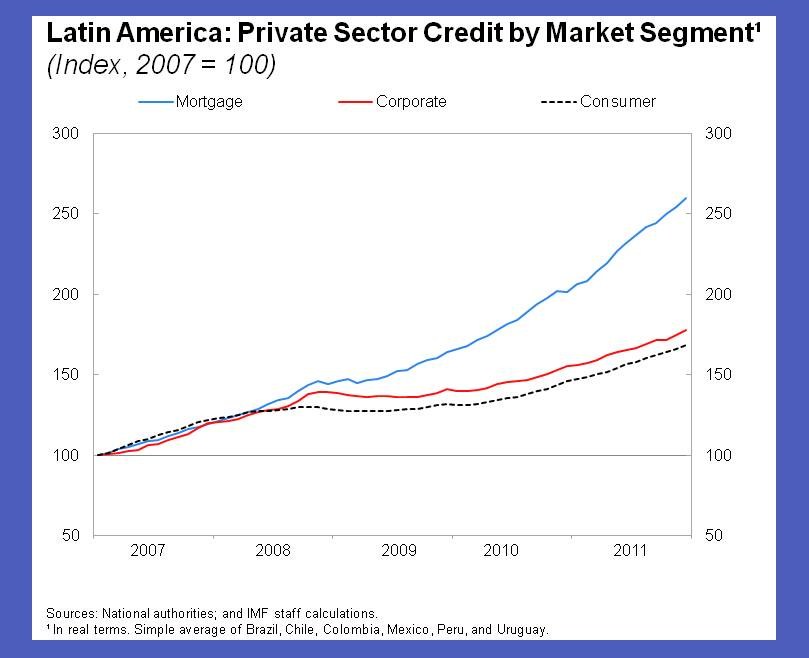Housing construction projects are sprouting up across much of Latin America and mortgage credit is also growing very fast. Does this sound familiar? It should!
Easy external financing conditions and high commodity prices have led to important improvements in living standards and credit deepening in many countries of the region over the past decade. The credit expansion has been particularly impressive in the mortgage sector, where legal reforms and government subsidies have also played a role.
Although mortgage credit in Latin American countries is relatively low by international standards —at just 7 percent of GDP versus over 20 percent in emerging Asia and over 65 percent in the United States—it has grown at an impressive annual average real rate of 14 percent since 2003, with Brazil leading the pack. Home prices have also risen sharply over this period, particularly in countries where mortgage credit has expanded the fastest (for more details see Chapter 5 in our latest Western Hemisphere Regional Economic Outlook).
So, are housing vulnerabilities emerging?
Policymakers and analysts in the region should be vigilant about rapidly growing mortgage credit and home prices because, as we know too well, they can create financial instability.
Latin America has a long history of credit booms gone wrong and experience shows that while credit-driven asset price bubbles build slowly they can sour quickly. But then again, Latin America has a large housing deficit, so construction activity should be catching up as living standards improve and mortgage credit deepens from its very low base.
A proper assessment of the situation is hindered by the limited and weak information available for the real estate sector in Latin America.
Patchy information
House price data are only available for some countries—namely, Brazil, Chile, Colombia, Mexico, Peru, and Uruguay—and even when available, time series are usually short, with coverage often limited to large metropolitan areas or segments within them. The information on the stock and flows of housing, as well as on construction activity is also patchy. Complete information on housing-specific financial soundness indicators and household balance-sheet data is only readily available and complete for just a few countries.
Notwithstanding these serious data shortcomings, in our latest report, we find evidence that mortgage credit may be growing well above rates explained by economic fundamentals over the past three years in a few economies in the region.
In Brazil, mortgage credit has surged, although this may also be explained by the introduction of a government housing credit program (“Minha Casa, Minha Vida”) aimed at low-income households. Certainly, the rapid expansion of mortgage credit in some countries warrants careful monitoring.
At the same time, other indicators suggest that housing vulnerabilities in the region are currently contained. Nonperforming mortgage loans are still relatively low and mortgages are a small share of banks’ funding structure. Similarly, the few existing household indebtedness indicators are at manageable levels, although they are rising, especially for low-income households.
Closing data gaps on housing activity
Experience suggests that no matter how small mortgage markets are, they can have systemic effects. That is, vulnerabilities arising in these markets can have economy wide implications that once materialized are often difficult to address and solve.
What have we learned from the U.S. housing situation? Problems in a small market (the subprime sector) can become systemic quickly, especially in new markets with significant data gaps.
For these reasons, action is needed to close information gaps and strengthen oversight of the housing sector. Disseminating current information on housing-specific financial soundness indicators and household balance sheet data should help.
But deeper reforms (such as improving credit registries, providing programs to increase consumer financial literacy, and using loan-to-value and debt-to-income limits) are necessary to ensure that the growth of the housing market is sustainable.




